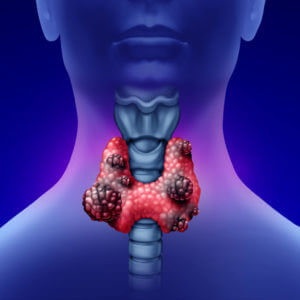
In short, the Radiation Exposure Compensation Act (RECA) provides financial support for individuals who developed thyroid cancer radiation exposure and other illnesses from nuclear testing.
- Compensation Eligibility – Downwinders who lived in specific areas during nuclear testing periods may qualify for payments.
- Required Documentation – Medical records and proof of residence during exposure periods are essential for claims.
- Application Process – The Department of Justice oversees claims with specific deadlines and requirements.
Thyroid cancer radiation exposure affects thousands of Americans who lived downwind of nuclear testing sites during the Cold War era. The Downwinders Fund, established through the Radiation Exposure Compensation Act, offers financial assistance to those who suffered health consequences from atmospheric nuclear testing.
This blog breaks down the eligibility requirements, application process, and important deadlines for downwinders’ cancer claims.
What Is the Downwinders Fund
The Radiation Exposure Compensation Act (RECA) created a federal program to compensate individuals exposed to radiation from atmospheric nuclear weapons testing. Congress passed this legislation in 1990 after recognizing the health impacts on communities located downwind of test sites.
The program covers three main groups of people.
- Downwinders who lived in designated areas during specific time periods when nuclear testing occurred.
- Uranium miners who worked in mines between 1942 and 1971.
- On-site participants who were present at nuclear test sites during atmospheric testing.
The fund provides lump-sum payments ranging from $50,000 to $100,000, depending on your category and illness. These payments help cover medical expenses and provide financial support for families affected by radiation-related diseases.
Who Qualifies for Downwinders Compensation
Eligibility for downwinders cancer compensation requires meeting specific geographic and time-based criteria. You must have lived in designated counties in Arizona, Nevada, or Utah during atmospheric nuclear testing periods between 1951 and 1958 or 1962.
The qualifying counties include specific areas in each state. Arizona counties are Apache, Coconino, Gila, Navajo, and Yavapai. Nevada counties are Eureka, Lander, Lincoln, Nye, and White Pine. Utah counties are Beaver, Garfield, Iron, Kane, Millard, Piute, San Juan, Sevier, Washington, and Wayne.
You must also have developed one of the covered illnesses after your exposure period. The most common qualifying condition is thyroid cancer radiation exposure, but the program also covers leukemia, multiple myeloma, lymphomas, and primary cancer of the following organs.
- Lung
- Breast
- Esophagus
- Stomach
- Pharynx
- Small intestine
- Pancreas
- Bile ducts
- Gall bladder
- Salivary gland
- Urinary bladder
- Brain
- Colon
- Ovary
- Liver
- Thyroid
Required Documentation for Your Claim
Successfully filing a downwinders fund claim requires gathering specific documentation to prove your eligibility. Medical records must clearly show your diagnosis of a covered illness, such as thyroid cancer radiation exposure, and the date of diagnosis.
Proof of residence during the exposure period is equally important. Acceptable documents include school records, employment records, medical records, military records, or any official documents showing your address during the qualifying time periods.
Birth certificates or other proof of birth date help establish when you lived in the affected areas. Marriage certificates may be needed if your name has changed since the exposure period.
According to the American Thyroid Association, individuals living within 200 miles of nuclear test sites had significantly higher rates of thyroid cancer compared to the general population. This research supports the scientific basis for the compensation program.
What Is the Application Process for RECA Claims
The application process for downwinders’ compensation involves several steps that must be completed carefully.
Start by obtaining the official claim forms from the Department of Justice’s Civil Division.
Complete Form 1 for downwinder claims, providing detailed information about your residence history and medical condition. Gather all required supporting documentation before submitting your application.
Submit your completed application with all supporting documents to the Department of Justice. The review process typically takes several months as officials verify your eligibility and documentation.
The Department of Justice may request additional information during the review process. Respond promptly to any requests to avoid delays in processing your claim.
Are There Deadlines for Filing Claims
Current RECA legislation sets a deadline of July 10, 2024, for filing new claims. However, Congress has introduced bills to extend this deadline and expand the program to cover additional areas and time periods. The new legislation, enacted in July 2025 as part of the “One Big Beautiful Bill Act,” reauthorized the program with a new claim deadline of December 31, 2027.
If you believe you qualify for compensation, file your claim as soon as possible.
Existing claimants who received denials can appeal their decisions or refile with additional documentation. The appeals process has specific time limits that must be followed carefully.
What Happens After You Submit Your Claim
After submitting your downwinders cancer claim, the Department of Justice begins a thorough review process. Officials examine your medical records to confirm your diagnosis meets program requirements.
Residence verification involves checking your documentation against historical records and databases. This step ensures you lived in qualifying areas during the specified exposure periods.
If your claim is approved, you will receive a lump-sum payment of $50,000. Payment typically arrives within 30 to 60 days after approval notification.
Denied claims can be appealed with additional evidence or documentation. Many initially denied claims are approved upon appeal when applicants provide more complete information.
Take Action to Secure Your Compensation for Thyroid Cancer Radiation Exposure IN Arizona, Nevada, and Utah
If you lived in a designated downwind area during nuclear testing and developed thyroid cancer radiation exposure or another covered illness, you may qualify for compensation through the Downwinders Fund.
At Downwinders®, we provide resources and guidance for filing your RECA claim and securing the compensation you deserve for radiation-related health impacts such as thyroid cancer radiation exposure. Our team of experts has over 20 years of experience in assisting downwinders with their claims.
Give us a call today at 1 (855) 631-7197 to learn more about compensation for thyroid cancer radiation exposure. We look forward to serving you!
 Downwinders® Claims
Downwinders® Claims